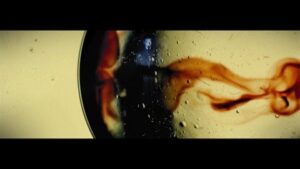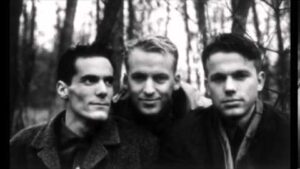Reviews
User Score
Rate This
Descriptions:
The story of Killing Joke’s 1994 album Pandemonium
Have a video request or a topic you’d like to see us cover? Fill out our google form!
https://bit.ly/3stnXlN
—–CONNECT ON SOCIAL—–
TIKOK:https://www.tiktok.com/@rocknrolltruestory
Instagram: https://www.instagram.com/rnrtruestories/
Facebook: https://www.facebook.com/RNRTrueStories
Twitter: https://twitter.com/rocktruestories
Blog: www.rockandrolltruestories.com
#KILLINGJOKE #EGYPT
I cite my sources and they may differ than other people’s accounts, so I don’t guarantee the actual accuracy of my videos.
These videos are for entertainment purposes only. READ OUR DISCLAIMER https://rockandrolltruestories.com/youtube-disclaimer/
Killing Joke, the influential post-punk band from Notting Hill, London, has always defied easy categorization. Emerging in the late 1970s, they fused punk’s raw energy with industrial sounds, dub rhythms, and a heavy dose of mysticism. The original lineup-Jaz Coleman (vocals/keys), Geordie Walker (guitar), Youth (Martin Glover, bass), and Paul Ferguson (drums)-quickly established a reputation for apocalyptic lyrics and tribal beats, setting them apart from their peers.
Throughout the 1980s, Killing Joke constantly evolved, experimenting with new sonic directions on albums like “What’s THIS For…!” and “Revelations.” Their 1985 single “Love Like Blood” brought them mainstream attention, but internal tensions and frequent lineup changes created instability. At one point, Coleman and Walker even retreated to Iceland, convinced nuclear Armageddon was imminent. Despite these upheavals, the band maintained a devoted cult following and influenced a wide array of artists, from Metallica and Ministry to Nine Inch Nails.
By the 1990s, with grunge dominating and many contemporaries fading, Killing Joke doubled down on their unique approach. Youth had left in 1982 to become a successful producer, while Coleman explored classical music and studied Arabic violin in Cairo. Both saw their outside pursuits as vital to the band’s creative health. Youth eventually rejoined in 1992, sparking a reunion of the classic lineup (except for drummer Ferguson, replaced by Geoff Dugmore). The reunion was turbulent; Youth described clashes of strong personalities, including one incident where Coleman hurled a whiskey bottle at him.
This renewed lineup led to the creation of their 1994 album “Pandemonium,” a project that marked not just a comeback but a full-scale resurrection. The album blended their signature industrial assault with Middle Eastern influences, resulting in a heavier, more urgent sound. Some vocal tracks were recorded in the King’s Chamber of the Great Pyramid of Giza-a decision driven by Coleman’s fascination with mysticism and Youth’s interest in the earth’s energy ley lines.
Recording in Egypt was fraught with challenges. The band, aided by Egyptologist Mary Lomondo, bribed officials with $3,000 to gain access to the pyramid under the guise of meditation. Inside, they faced technical difficulties: batteries drained rapidly, and the intense atmosphere overwhelmed Coleman, who broke down in tears. To counteract the strange energy, Youth led a ceremonial recording session with incense, flowers, and quartz crystals, believing it would protect them and restore balance. The ritualistic approach seemed to work, and the sessions took on an almost supernatural quality-at one point, Youth claimed Coleman appeared to levitate.
The experience was intense for everyone involved. Engineer Sam was so disturbed by what he witnessed that he fled the pyramid, haunted by visions. The sessions were filmed for the documentary “The Death And Resurrection Show,” which details the alleged paranormal events that occurred.
Three songs-“Pandemonium,” “Exorcism,” and “Millennium”-were recorded in the pyramid. The album’s lyrics tackled themes of humanity’s fate, the struggle between good and evil, and contemporary issues like AIDS, cruelty, and poverty. “Pandemonium” and “Millennium” charted in the UK, and the single “Jana” also found success.
Youth reflected on the band’s journey, emphasizing that Killing Joke’s punk origins were never about simplicity but about pushing boundaries. Over time, they incorporated influences from disco, dub, Krautrock, and industrial music, culminating in the ambitious sound of “Pandemonium.” The album’s success brought them their largest audiences yet, with Coleman noting that they were finally enjoying widespread recognition and playing some of the biggest shows of their career.












